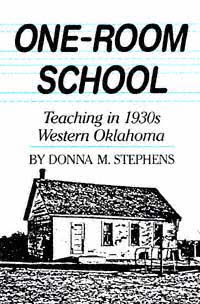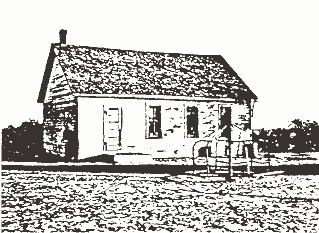We offer to read an annotation, description, summary or preface (depends on what the author of the book "One-room school: teaching in 1930s western Oklahoma" wrote himself). If you haven't found the necessary information about the book — write in the comments, we will try to find it.
A brief introduction to Oklahoma history and Indian Lands becomes personal in this memoir of the authors mother, Helen Hussman Morris. It presents a description of the evolution of Oklahomas educational system through the early part of the twentieth century, as well as a memorable reflection on rural American life in the early 1930s. Helen Hussman was born on Indian land near Fonda, Oklahoma, in 1910. She was the daughter of a German farmer from Iowa who had been hired to farm and raise cattle for members of the Cheyenne and Arapaho Indian tribe. Within a few years, her parents were able to purchase a farm near Seiling and begin to apply their energies to their own property. As a young child, Helen helped her father in the fields, spending long hours plowing, planting and harvesting with teams of horses. Meanwhile, her mother and sisters ran the house: cooking, sewing, washing, ironing, without the luxury of electricity or running water. Their hard life had its cheerful side: during the winter, Helen and her two sisters and brother helped their dad run his traps and hunt rabbits; in the summer after harvest, they joined other families in camping outings, cooking over campfires, fishing, and gossiping. Although Helen wanted to be a nurse, her father didnt want her to enter that line of work. During her junior year at Seiling High School, she was given the opportunity to do some substitute teaching. She discovered that she enjoyed working with small children and decided to become a teacher. In the late 1920s, it was possible for a high school student to take a county exam and earn a certificate to teach for one or two years, and that is what she did. Helen was interviewed by the three school board members of Orion School about fifteen miles from her home, and by the time she graduated high school in 1929, she had a teaching job earning $80.00 per month. During that summer, she still helped out on the farm, but her mind was filled with plans for her first teaching job with pupils in all eight grades. Helens sister made her some new clothes for her first job, and she began to gather the materials she would need, including a teachers bell. When Helen went to see the building before school started, she was temporarily astounded to find it isolated on a sand hill in an area unsuitable for farming or ranching. For $20.00 per month, she had arranged to board with a school board member and shared a two-room cabin, two miles from the school, with the widow and her three older sons. Helens father picked her up on Fridays, so she could spend the weekends at home on the farm. To the sixteen pupils in all eight grades, Helen was required to teach agriculture, orthography, reading, penmanship, English grammar, physiology and hygiene, geography, U.S. history and civics, and arithmetic, as well as the evils of alcohol, morals, human kindness, and reverence for the flag. She organized games for recess and lunch time and devised special programs for the holidays. It was also her responsibility to provide monthly programs for the community, when they tried to raise extra money for the school with box- and pie-suppers and some kind of entertainment. During the winter, Helen had to arrive early to get the fire going and heat the building before the first pupils arrived. After school was out, she had to clean the building and lock it before walking two miles back to the house in which she stayed. All of this was a tremendous responsibility for a young girl just out of high school. Helen was basically on her own with no real assistance from the county school superintendent or anyone else, except a teacher friend of her sister who became Helens mentor. She soon discovered that the teachers meetings were a disappointment. No one offered any real advice on how to teach seven or eight subjects to all eight grades in the same room. However, all teachers knew that their jobs d






